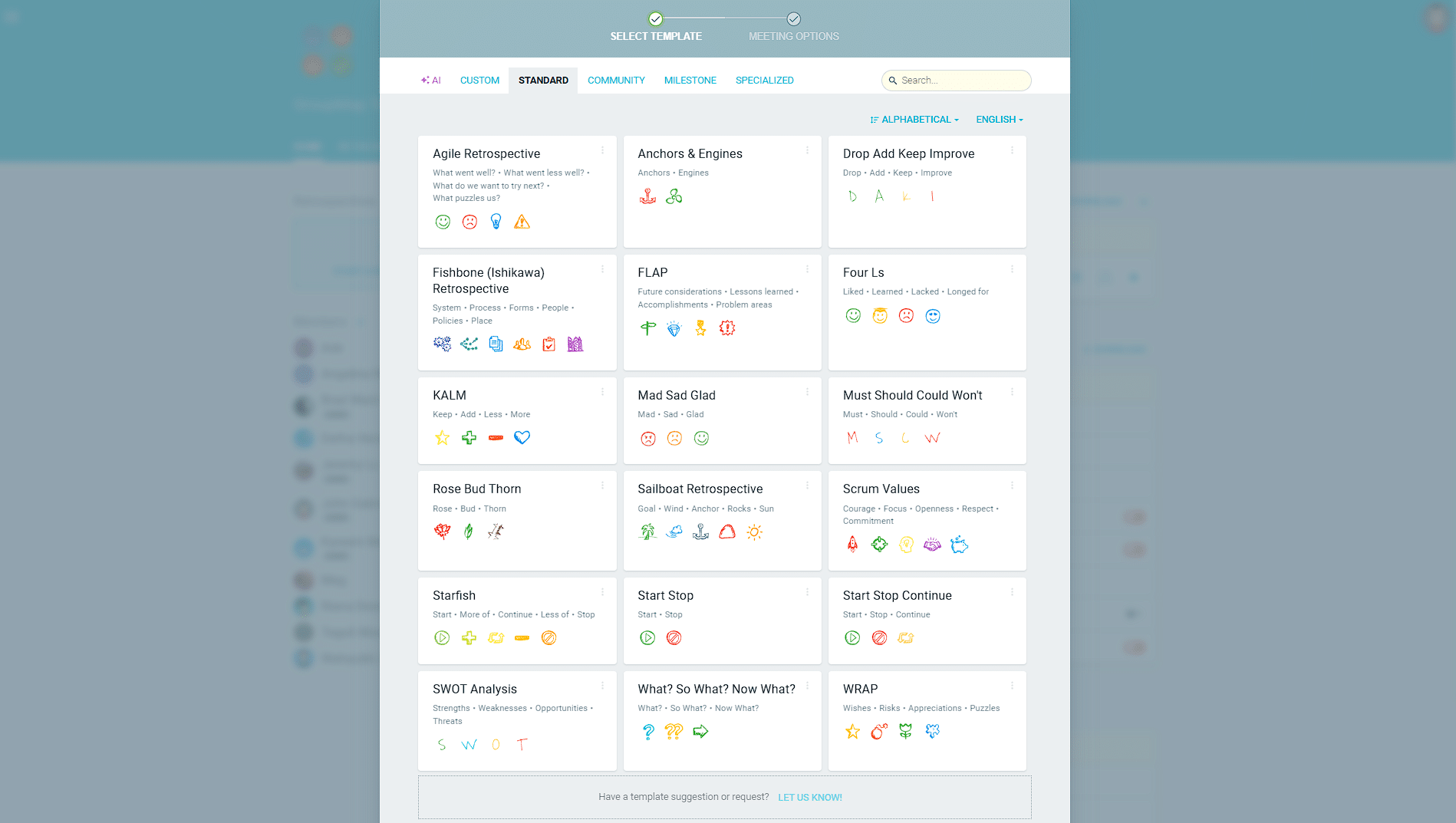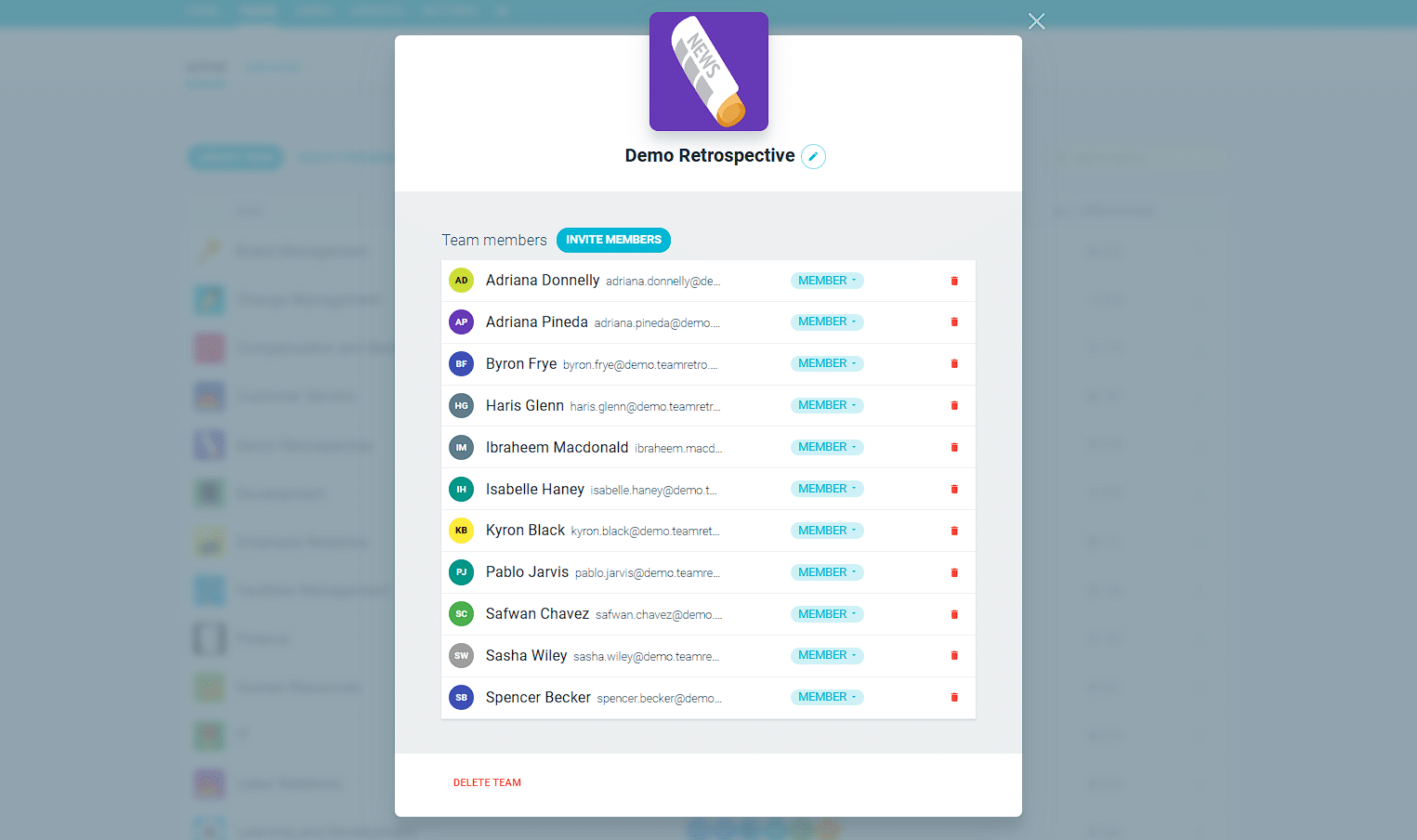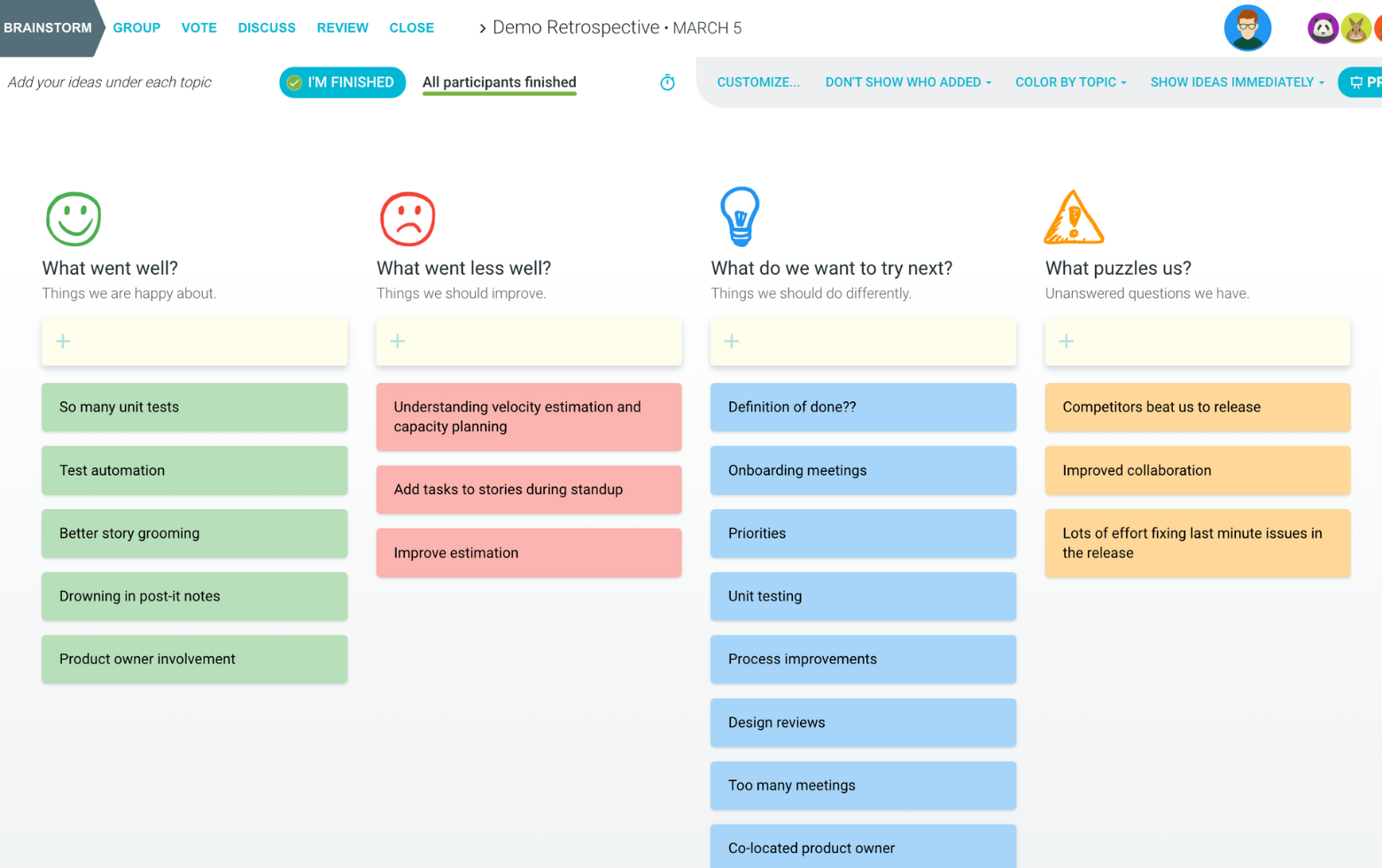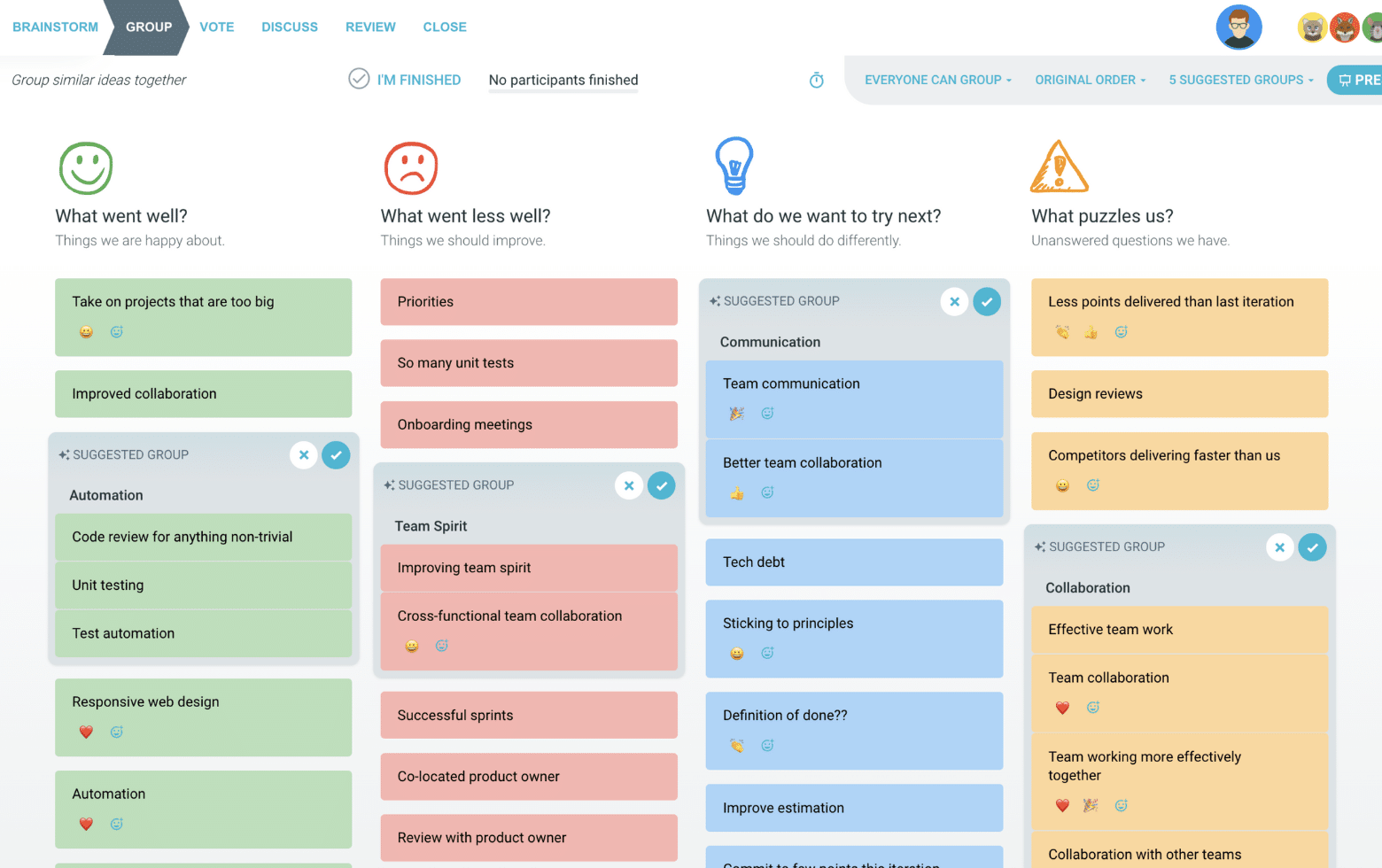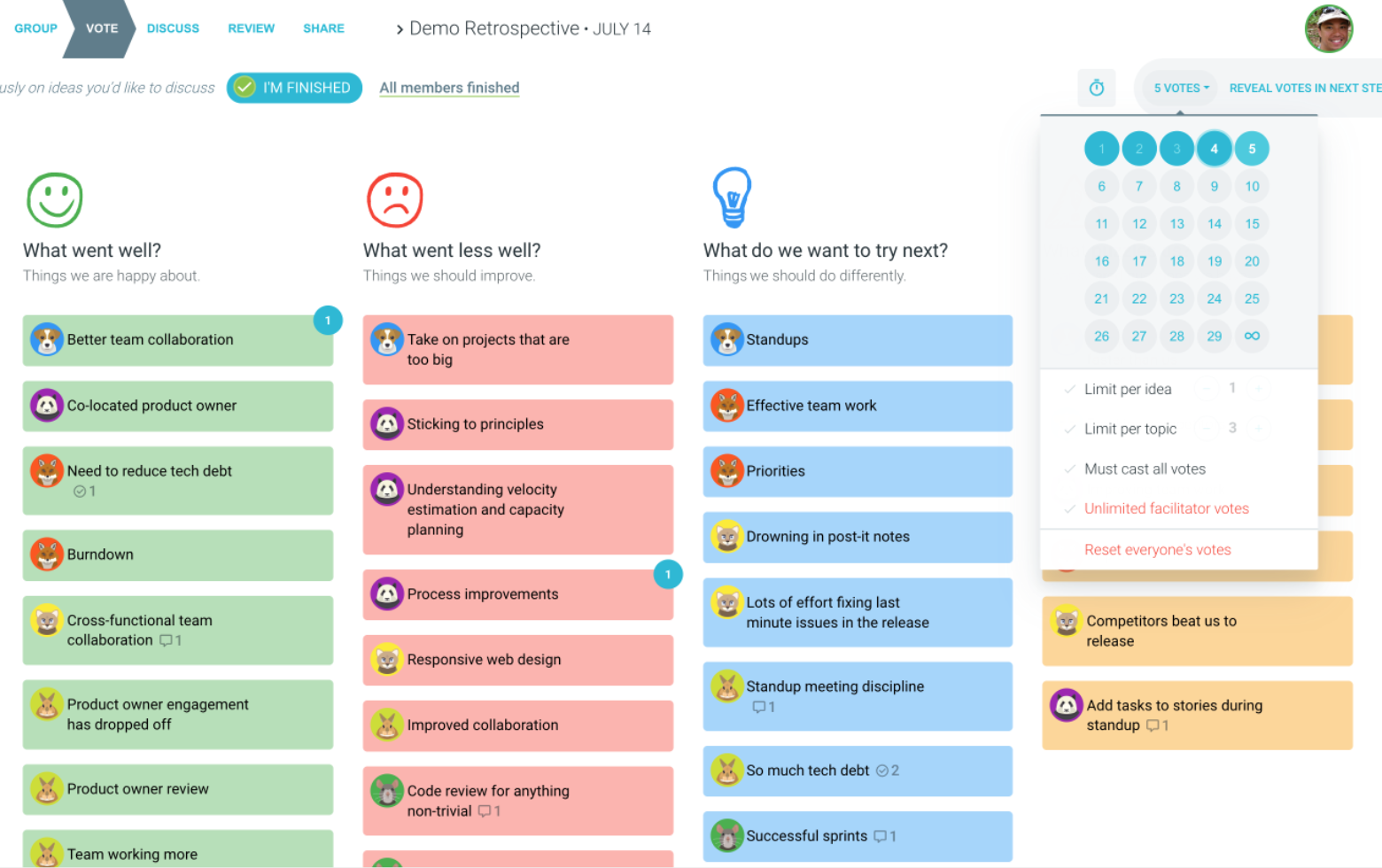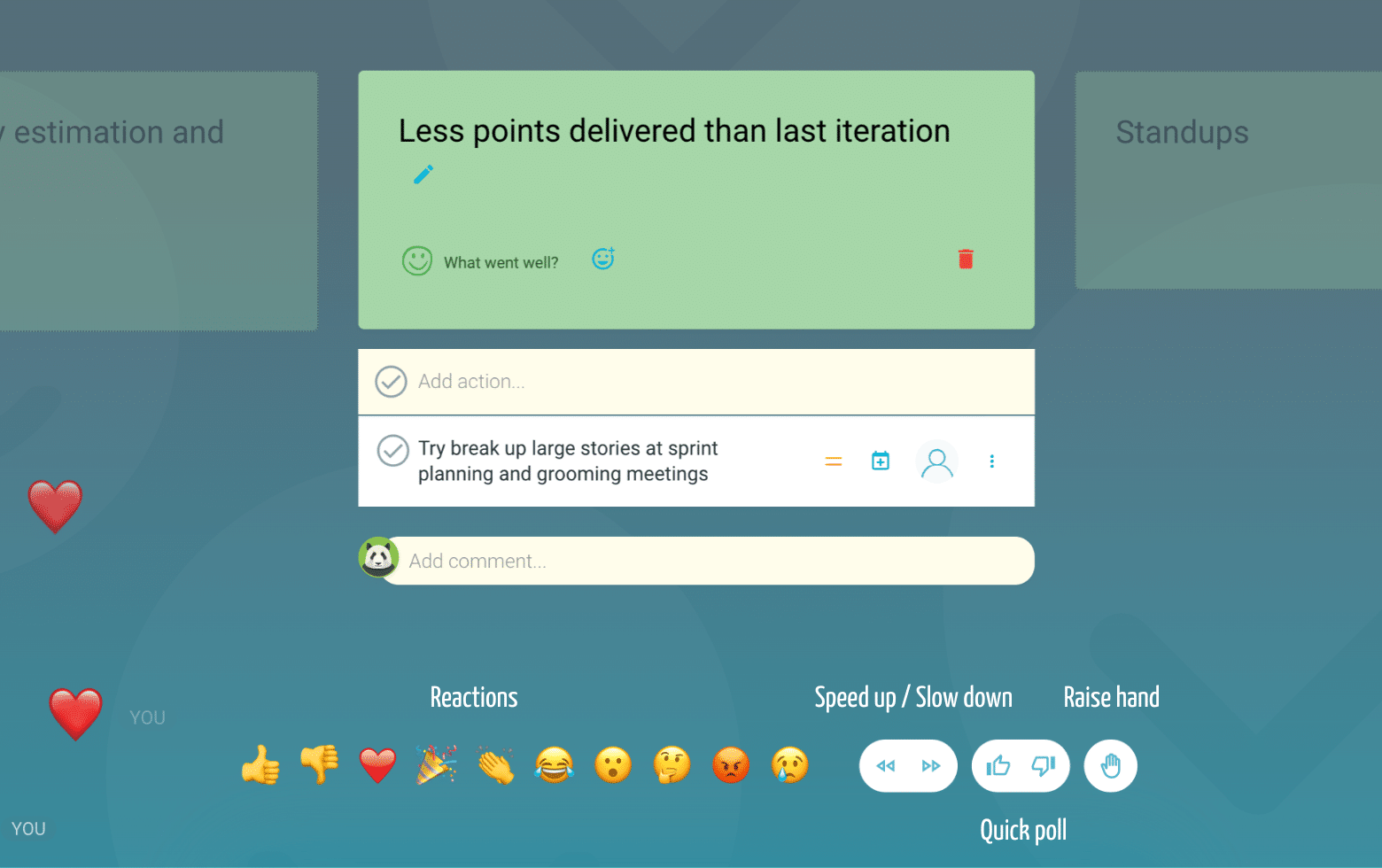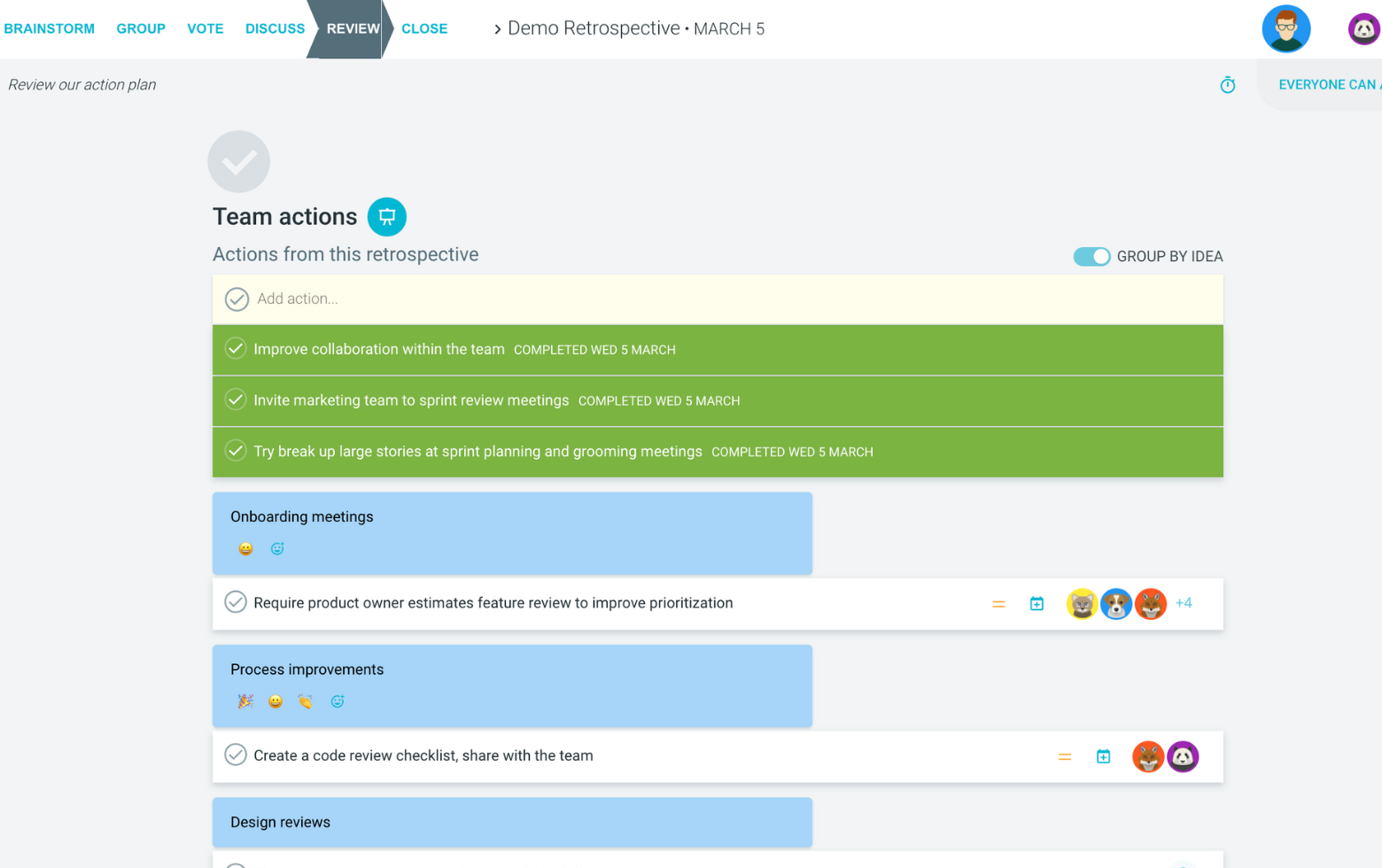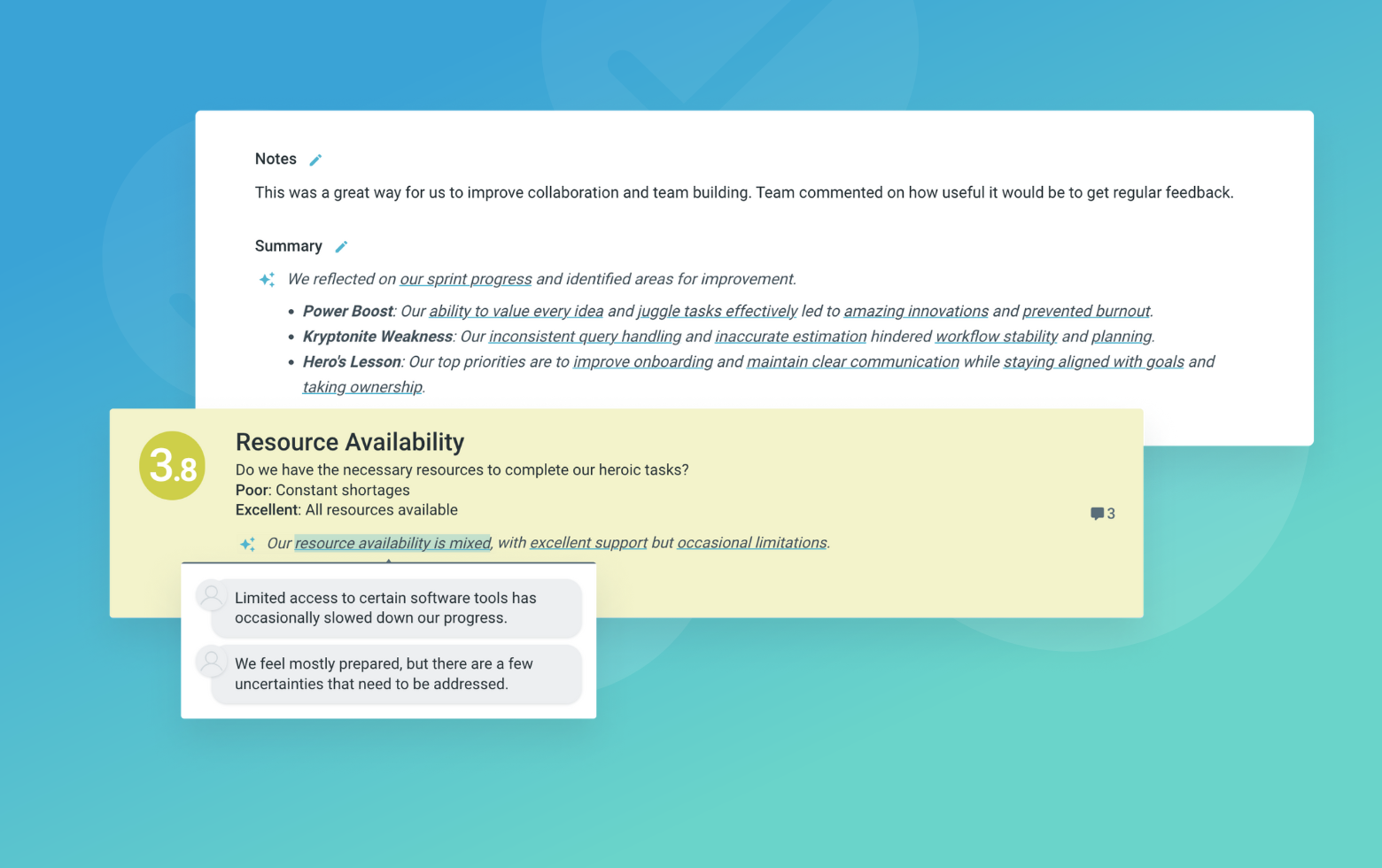The Pathfinder retrospective is a forward-thinking approach that helps teams chart their course toward improvement and innovation. By focusing on discussion, change, and experimentation, this format encourages teams to explore new possibilities and create actionable paths forward.
This retrospective format is particularly effective for teams who want to break out of established patterns and discover fresh approaches to their work. It combines elements of strategic planning with practical experimentation, helping teams move from idea generation to concrete action.
The three-phase structure guides teams through a natural progression: first exploring topics through open discussion, then identifying potential changes, and finally committing to specific experiments. This approach ensures that conversations lead to tangible outcomes and meaningful progress.
What is The Pathfinder Retrospective
Let's discuss
What should we talk about?
This is the discovery phase where teams surface important topics and opportunities. Encourage participants to share observations about processes, team dynamics, or challenges they've noticed. Keep the discussion open and ensure everyone has a chance to contribute their perspectives.
Let's change
What areas of change could we pursue?
Guide the team in identifying specific changes that could address the discussed topics. Focus on realistic and actionable changes that the team has the power to implement. Help the team prioritize changes based on potential impact and feasibility.
Let's try
What should we try or experiment with?
Help the team convert their change ideas into concrete experiments. Each experiment should have a clear goal, timeline, and success criteria. Encourage small, manageable experiments that can provide quick learning opportunities.
Suggested icebreaker questions
- What's the most interesting experiment or new approach you've tried recently, either at work or in your personal life?
- If you could instantly change one thing about how we work together, what would it be?
Ideas and tips for your retrospective meeting
- Keep experiments small and timeboxed to reduce risk and increase learning opportunities
- Ensure each experiment has clear success criteria and a defined evaluation period
- Document both successful and unsuccessful experiments to build organizational knowledge
- Encourage participation from all team members, as diverse perspectives lead to better experiments
- Follow up on experiments in subsequent retrospectives to track progress and adjust as needed
.
How to run effective meetings with TeamRetro
Start Your Session in a Click
Log into TeamRetro and choose your template. Customise questions and the workflow to create your perfect retro for your team.
Create Your Team Easily – No Separate Accounts Needed
Brainstorm Individually – Free From Bias
Smart Grouping for Faster Insights
Fair, Flexible, and Fast Voting
Engage, React, and Capture Key Insights
Walk your team through ideas one by one with Presentation Mode. Stay in sync, spark real-time discussions, and capture feedback with comments, live reactions, and polls—all in one place.
Turn Ideas Into Action
Propose next steps with team buy-in, get AI-powered action suggestions, and keep everything in one place. Committed actions sync to your personal dashboard and integrate with your workflow tools—keeping you on track.
Save, Share, and Stay on Track
Get quick AI-powered summaries, add facilitator notes, and store retrospectives in your library for easy access. Schedule your next session and track published actions to keep your team accountable at the next retro.
Turn Team Data into Actionable Insights
Uncover trends, common themes, and key engagement metrics at a glance. Track sentiment shifts, analyze conversations, and monitor completed actions to drive continuous improvement.
